SparkFun WeevilEye - Beginner Soldering Kit
Have you ever seen a Weevil? It's a pretty under-appreciated beetle, so we thought it deserved a kit. Okay, so we just kind of like the name and think it makes a cute board.
The WeevilEye is a through-hole soldering kit designed for the beginner. It has a low parts count so even young kids can easily complete it. Once it's put together the red LED "eyes" light up brighter or darker according to how much light is getting to the photosensor.
This kit comes with all of the parts you need to build your own WeevilEye as well as an instructional kit card that will guide you through the assembly process. You will need a soldering iron and some solder, an inexpensive choice for the beginner is the 30W Soldering Iron listed below.
Note: Due to the requirements of shipping the battery in this kit, orders may take longer to process and therefore do not qualify for same-day shipping. Additionally, these batteries can not be shipped via Ground or Economy methods to Alaska or Hawaii. Sorry for any inconvenience this may cause.
- 1 x WeevilEye PCB
- 2 x Red LEDs
- 1 x 47k Ohm Resistor
- 1 x Miniature Photocell
- 1 x 20mm Coin Cell Battery Holder
- 1 x 20mm Coin Cell Battery
- 1 x 2N3904 Transistor
- 2 x 220 Ohm Resistors
- Schematic
- Eagle Files
- WeevilEye Manual (Assembly Instructions)
- Soldering Tutorial
SparkFun WeevilEye - Beginner Soldering Kit Product Help and Resources
Core Skill: Soldering
This skill defines how difficult the soldering is on a particular product. It might be a couple simple solder joints, or require special reflow tools.
Skill Level: Rookie - The number of pins increases, and you will have to determine polarity of components and some of the components might be a bit trickier or close together. You might need solder wick or flux.
See all skill levels
Core Skill: Electrical Prototyping
If it requires power, you need to know how much, what all the pins do, and how to hook it up. You may need to reference datasheets, schematics, and know the ins and outs of electronics.
Skill Level: Rookie - You may be required to know a bit more about the component, such as orientation, or how to hook it up, in addition to power requirements. You will need to understand polarized components.
See all skill levels
Comments
Looking for answers to technical questions?
We welcome your comments and suggestions below. However, if you are looking for solutions to technical questions please see our Technical Assistance page.
Customer Reviews
4.8 out of 5
Based on 14 ratings:
1 of 2 found this helpful:
Fun and easy
This was a great little kit to get started with. I also got one for my son and he really enjoyed it (he's 16). I wish there were some more kits similar to this or slightly more advanced that we could do to keep the excitement going.
This is great! We love hearing about kids getting into electronics. A couple cool kits that a 16 year old might like would be Bleep Drum https://www.sparkfun.com/products/12976 Minty Boost https://www.sparkfun.com/products/10094 Simon Tilt https://www.sparkfun.com/products/12634
1 of 2 found this helpful:
Great way to learn soldering!
The instructions were crystal clear and it was fun to have a "toy" at the end of my first soldering lesson. Thanks, Sparkfun!
1 of 2 found this helpful:
Fun
My 6 year old enjoyed building this together with me. She is proud of what she made and likes playing with it. She was able to figure out the placement of components and we soldered each piece together. The instructions are the best I've ever seen.
1 of 2 found this helpful:
Great for STEM class
Easy to follow printed instructions as well as a quick informative video. Class of 1st time solders were able to quickly assemble and solder weevilEye within one class period. Great confidence builder for future electrical engineers.
1 of 2 found this helpful:
Great intro to through hole soldering...
Great intro to through hole soldering for the beginning Maker.
1 of 2 found this helpful:
Soldering Workshop
This project works very well for the young people, ages 10-13, that we serve at our workshops. The WeevilEye Beginner project is preceded by a practice exercise, soldering some spare parts randomly to a single sided breadboard.
1 of 2 found this helpful:
Awesome little project!
This was the first thing I've ever soldered together. It went together pretty easily, the instructions were clear, and when I put the battery in, it actually worked the first time! I was so proud of myself. I would definitely recommend this to any beginner.
1 of 2 found this helpful:
an affordable and fun intro to soldering.
My 7-year-old and I had a great experience with this kit. It's just the right level of complexity to introduce a younger person to electronics without being overwhelmingly technical.
We could have finished this in about 10 minutes, but took an hour or so with some discussion around the functionality of the components, safety, soldering technique, etc.
I highly recommend this product as a very cost effective way to get kids interested in electronics.
Super Fun
I ordered a couple different kits for my kids and this one was the most fun to assemble and play with.
Great kit to learn soldering
I used these in a class to teach soldering and they were a great primer for the kids. I would not hesitate to recommend this kit to anyone. My only complaint is that they ran out of kits so I didn't have enough.
Delightful!
Extremely simple build that one can complete in a few minutes with a bit of experience. I made one for myself a few years ago which keeps me company on my desk and occasionally I'll bring him to work with me--he always gets big smiles. I just built another as a gift for my girlfriend for which I substituted pulsing multicolor LEDs.
Very Nice Beginner's Kit!
Just right for kids learning to solder. The little circuit board is VERY well labeled - helps to avoid misplacement of components. Instruction manual is excellent.
We start the kids (middle school) on a practice board first (with resistors and LEDs) and then they "graduate" to this kit. We also have them "check" the resistance values with a DMM before they solder them in place.
We do caution the kids that the battery will run down if left in at night (no ON/OFF switch) and that the coin cell might be a swallowing hazard for little brothers and sisters.
Excellent learn-to-solder kit
This kit is my favorite for teaching people how to solder. The instruction pamphlet is great, it goes over placement and orientation of each component and has illustrations of good and bad solder joints. There are enough components on the board that the process of soldering is reinforced. AND - the best part is that it's reactive! This is often someone's first experience with building electronics, and having it be interactive is really exciting and fun. Great kit!
Solder teaching project
This kit proved to be an excellent and satisfying first soldering project. I wanted to teach soldering to my 13 year old granddaughter and this worked very well. She had an introduction to electricity in a STEM class at school, but this was the first time she had seen a soldering iron. After a brief introduction to soldering tools and the components, she soldering a few wires together, then a few practice components onto a practice circuit board she was ready to try the "bug". She followed the excellent, clear booklet directions with ease, confidence and very little supervision. When we popped in the battery, the "bug" worked the first time. It's a great kit!

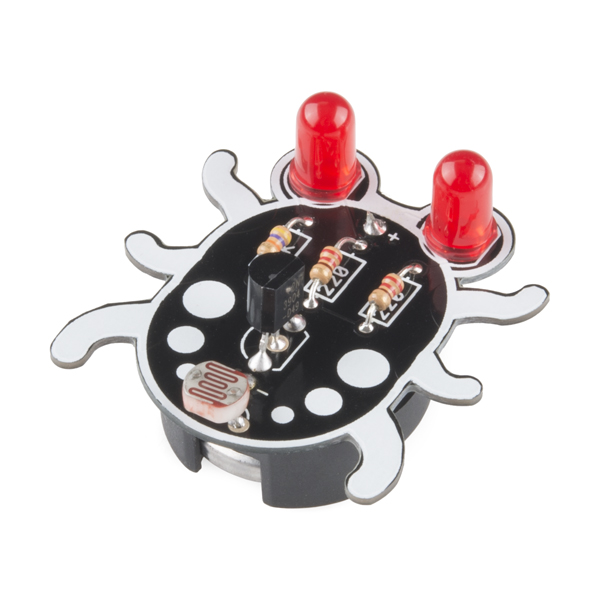
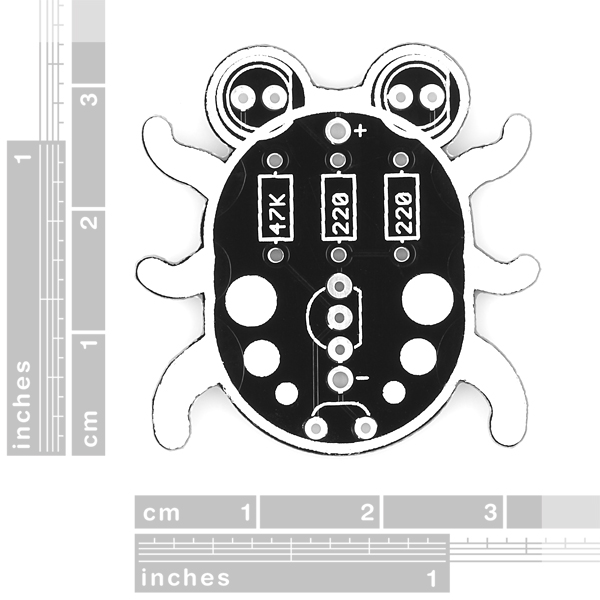
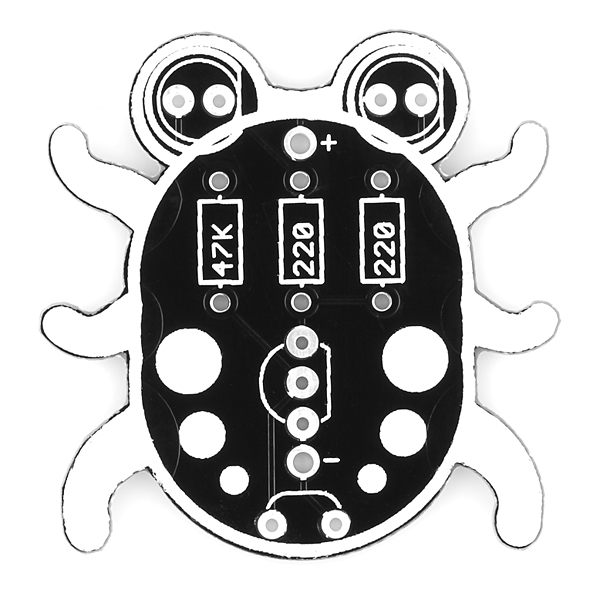
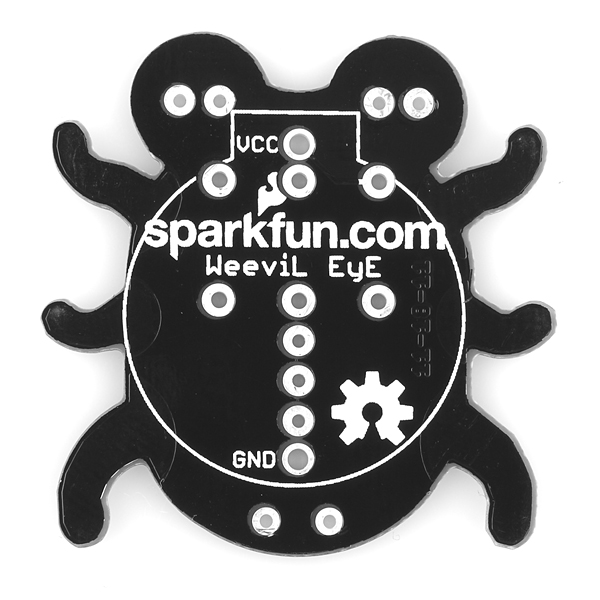
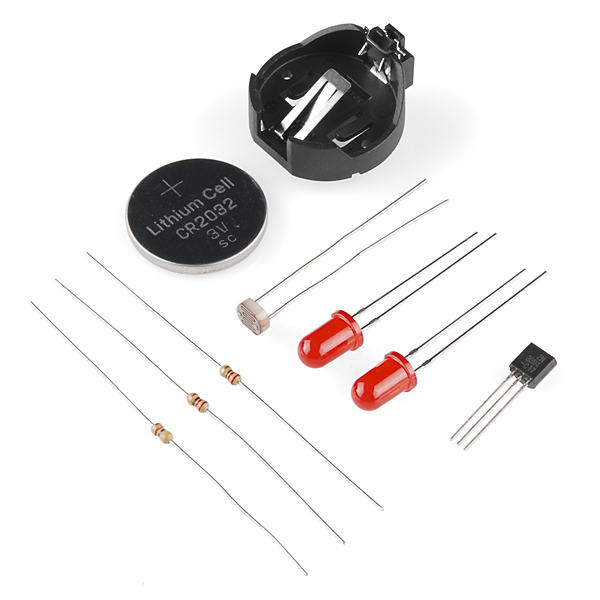
I use this kit to teach soldering at a public library. I've helped students put together 60+ kits. Most of them have worked. The age range is from 10 to 60.
One thing I would like to see is larger components and bigger pads on the PCB. Several of my students have commented that the pads are too small and as such, hard to see. As a kit aimed towards beginners, I feel that larger pads and components might make it easier for people who have never soldered before.
Agree about the on-off switch, but the battery does pop out pretty easily. Also, it would have been better if the leads on the battery clip were a tad longer - they just barely came through the holes and the clips on the third hand device weren't big enough to hold it together during soldering - took another person to do it, but it was a bit awkward.
Otherwise, my seven-year old granddaughter really enjoyed this and couldn't have been more proud when she'd finished . She likes keeping it in a red Sparkfun box and slowly opening the lid to show people so the lights are on when you peek in and off when the shadow passes the sensor. Best $10 Christmas gift under the tree. See: http://huevosrancherostx.blogspot.com/2014/01/beware-weevileye.html
This was her second soldering project - the first was a simple LED circuit with one of your cycling RGB LEDs and a switch from Radio Shack turned into a bracelet covered with colored instamorph moldable plastic, decorated with beads and baubles. The WeevilEye would have been a bit much for a first project, but she was ready for it after a bit of practice. Soldering the IC on the Simon Says kit looks a bit intimidating for her still, though we'll get there. Y'all should try to come up with a couple more at this level.
Thanks for producing/selling this!
Thanks for the feedback. Glad your granddaughter enjoyed her gift!
I got this for my 10 year old son. He really enjoyed building it, and it was a great learning exercise for him.
I have a suggestion for future revisions: add an on/off switch. The battery will only last a few days otherwise (especially if left in a dark room). I modded the board to include a switch, so he can turn it off to preserve the battery when not in use.
Sooo my LEDs won't dim or change brightness at all. Could this be due to a jumped solder joint somewhere? Or is the photocell just suspect...? I feel like kind of a dummy for failing at this project :/
if there are some others componment can instead of 2N3904 Transistor?it is not common used.
Now, sell a soldering iron with a heat-proof cap to prevent burns, (I got a second degree burn -_-)
This is an excellent beginner kit and is a great way to suck kids into the world of electronics. I highly recommend it as a beginner project. But, please add an on/off switch and, even better, the use of more environmentally friendly batteries.